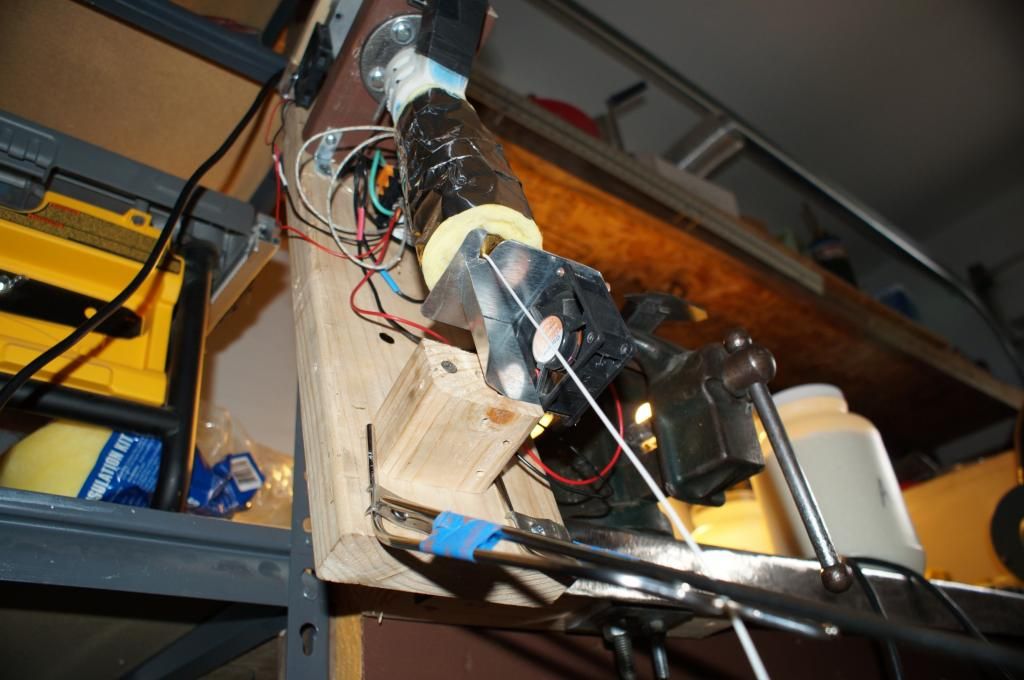Yes, that makes sense, that the filament would get scrunched up due to heat.
I did upload the new 3mm firmware successfully, and although I did not do an actual test, I did run a "dry test" and it seems like the filament guide is moving the correct distance.
Anyways, yes, I'd be happy to post pictures! (Do not be fooled by the filament cooling fan in the pictures. Although it's there, it has never been used with the vertical setup. Come to think of it, I wonder how it would affect filament thickness. The filament would harden more quickly, thereby reducing the amount of stretch which would decrease filament thickness... Something to try.
PS. The FilaWinder is absolutely brilliant! But I do have one design related suggestion that would improve it when working with 3mm filament. I can see how it would work fine as it is with 1.75mm filament, but due to the added stiffness of 3mm filament, the servo motor is having a heck of a time moving the filament back and forth primarily due to the small distance between the filament guide and and the spool. This distance will only get smaller as the spool fills up. I realize that the servo motor can be moved further away from the spool by a couple inches, but then it would decrease the distance between the filament guide and that bottom plate with the PTFE, which would still make it difficult for the servo motor to move the filament. I plan to increase the size of the base and increase these distances, but just something to keep in mind for those of us that use 3mm filament.
Sorry, some of the pictures came out side ways... I'll fix that when I have some time... gotta go to work.










